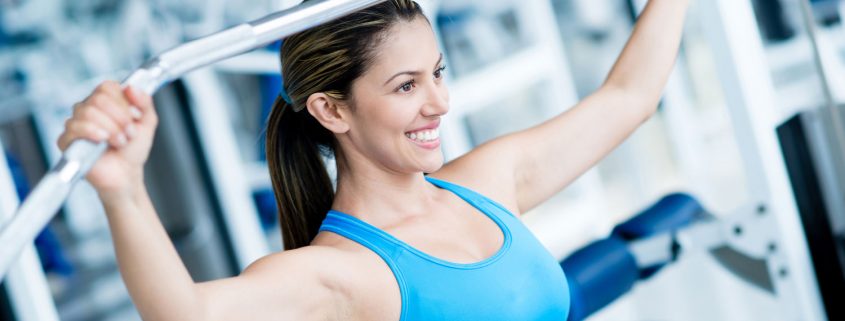Osteoporosis & Boosting Bone Health
If when thinking of osteoporosis, a thin elderly lady with a stooped posture comes to mind, then think again. Although a classic example of this bone disease, there are quite a few other factors to consider. Knowing and acting on them earlier, will contribute to mitigating the risks of this disease as you age.
Standard risk factors of osteoporosis
There are some factors with osteoporosis that we cannot change, the first being age. Becoming older makes it harder to maintain muscle and flexibility, yet our bones can also weaken. As they are out of sight and mind, the loss of bone density in osteoporosis is often described as the ‘silent disease’.
Women over 65 are at most risk of having reduced bone mass. However as hormonal changes are something that can trigger a reduction in bone density, both men and women can be effected at an earlier age if they have a condition that effects this hormone level, such as chronic liver or kidney disease, diabetes or a body weight that is excessively high or low.
Women have far greater risk factors due to menstrual periods having the potential to be infrequent, late or absent, and if menopause has begun. The hormonal changes in men during our previously mentioned misnomer, ‘Manopuase’, can also be a trigger due to low testosterone.
Proactive preparation for osteoporosis
Ageing and hormonal changes are outside our control yet being aware of your level of risk should be investigated first. Your GP will be able to assess these risk factors based on your medical history and what is the best course of action to suit your current medical condition.
Weight bearing activities
At any age, exercise will be of benefit to health, but to specifically target bone disease, weight bearing exercises are the key.
Just like muscles, your bones need a workout to stay strong, and will benefit most from weight bearing exercises. So any exercise where your body is forced to work against gravity, will prompt the body to make new bone and increase bone mass.
This can range from general exercise to resistance training. ‘Research indicates that resistance training may have a more profound site specific effect than aerobic exercise’. So the use of weight machines at the gym, free weights such as barbells at home, or your own body weight when performing squats or leg lifts, will have a greater impact on bone density. This can complimented with the use of resistance bands. Just like a giant rubber band, these provide continuous resistance throughout an exercise movement. They are also good for people who travel a lot as they can be easily packed away and are more portable than weights. Resistance training also has the benefit of improving balance, strength and muscle mass, to offset the risk factors of osteoporosis.
Your GP can refer you to a physiotherapist or exercise physiologist, for an exercise plan that can be tailored to your level of fitness. Further to this there are a range of other activities that will help, for example dancing, tennis or even something as gentle as yoga, where studies suggest it can raise bone density in the spine and femur safely.
Even just incorporating exercise into your daily routine, such as walking to the train station rather than driving, or taking the stairs instead of the elevator, will contribute to both a more active lifestyle and healthier bones.
Maintaining a healthy lifestyle
The most obvious and well known contributor to healthy bones is calcium, which can be found most easily in tofu and dairy foods. Adding this into a balanced and nourishing diet, whilst eliminating excessive consumption of alcohol or smoking, will work wonders for your overall bone density. One of the more subtle risk factors is your build, as lighter framed or excessively obese people are more susceptible to osteoporosis, making a balanced diet and exercise even more crucial.
Outdoor vitamins
A good dose of vitamin D every day can be added to your diet. In summer a few minutes every day outdoors will provide what your body needs, and in and in winter up to a quarter of an hour is best. For those whose skin type is more susceptible to sun damage, note that people who exercise vigorously have higher levels of vitamin D, therefore increasing the intensity of your workout could be used to replace time spent in the sun.
Signs and management of osteoporosis
One of the biggest indicators that bone disease is present is often after a bone is fractured easily after a mild to moderate trauma. Back pain, a stooped posture or a reduction in your height over a period of time can be other indicators of the disease.
Based on any of these indicators or your medical history, your GP may refer you to a bone mineral density (BMD) screening as this is the most reliable diagnostic test for osteoporosis. In general, women who are over the age of 65, are postmenopausal or have more than one of the aforementioned risk factors such as a family history, will need to be screened. Men whose testosterone levels have diminished due to age, obesity, diabetes, medication or chronic medical conditions or disorders may also need to be tested.
Once diagnosed with osteoporosis it is important to consider the management of the disease, as a lower bone mass means an increased risk of fractures, primarily of the hip, spine, and wrist.
Incorporating balance exercises will reduce the risks of falls. This can be achieved with core strengthening exercises, found in pilates, along with exercises and resistance training. Maintaining a safe and stable environment in which to build balance, strength and mobility, is essential. A simple example is the use of a chair or table to asset the exercise.
Discussing these options with your doctor can provide feedback as to what will best suit your needs based on your medical history. Medication may also be recommended in some cases and your doctor can also educate you on any potential side effects, and help manage the overall prescribed treatment plan.
Preparation for osteoporosis will place you in good stead, regardless of whether or not you develop a lower bone mass. Aiming to maintain your strength, stability and agility will at least mean you’ll be spritely, no matter what your age.



